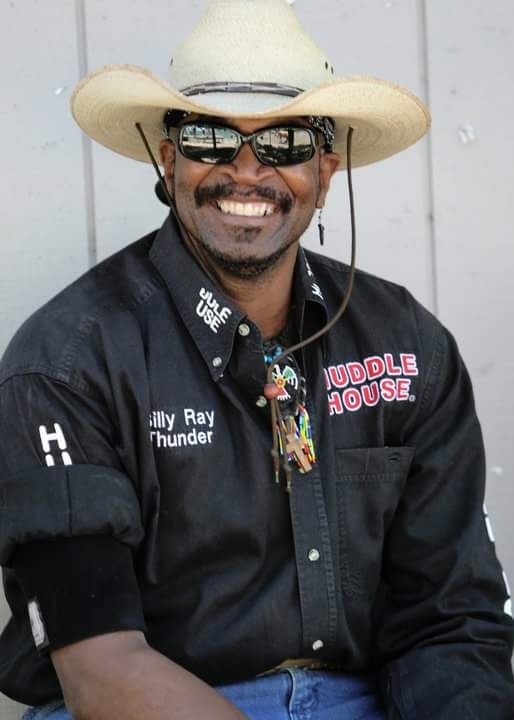
By Stanford E. Moore
William Ray Higginbottom is a modern day gladiator in one of the toughest sports of today. He has been competing in rodeos for nearly 30 years. At 61 years young, Higginbottom still loves the challenge the sport brings. Higginbottom was born to the parents of Annie and Alex Higginbottom in the year of September 20, 1954 in Akron, Ohio. He spent his early years in the military where he established a reputation of toughness. Both of his parents having Native American bloodlines, Higginbottom was honored with the name “Thunder” which was a perfect fit. Standing 6’3″ and 225 plus pounds, Billy Ray Thunder is considered somewhat of a misfit in a sport where the average competitor is considerably shorter and lighter. He was built more like an NFL linebacker than a rodeo cowboy! Competing over the years against athletes who are half his age and considerably shorter does not give him the competitive advantage in such a short timed event. Yet, he still gets it done. I had the opportunity to sit down with this legend in the Black Rodeo Circuit.
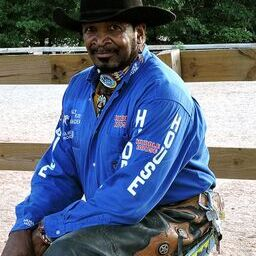
When asked what led Mr. Billy Ray Thunder to the sport of rodeo, he replied:
Billy Ray Thunder:
I started out in the military. When I was a child, I used to watch a lot of cowboy movies. I decided one day that I wanted to be an athlete. I started out playing football and got a scholarship to Arch Bishop Holy High, and really thought that I would be an NFL football player. I got a couple of tryouts with NFL teams. I went to Irving Texas to tryout out with the Dallas Cowboys and a couple of Canadian teams, but I just didn’t have the weight (I’m bigger now than I was in High School!) I eventually got on a semi-pro team, but lost my eligibility to accept a scholarship because of being paid as an amateur. I later went into the military and played German American football. After I got out, I went into the Army at first and then the Navy because I didn’t know what I wanted to do. At that time, I had a stepbrother that was rodeoing and I used to watch him on TV. I’d say, “He is crazy.” I later was stationed in the Navy down in Orlando, Florida and he had a rodeo here, so I came here to watch him. He got me on my first bull. It was a joke the way he did it because I was trying to impress a girl and get a date with her. He was supposed to pull me off of the bull before the bull was to come out of the chute, but he didn’t. The bull took me out into the arena and broke two of my ribs, and they took me down to Grady Hospital. It then became personal because I knew I would always have to hear at the dinner table that “you can’t do this.” I eventually moved here to Atlanta and met a couple of Caucasian cowboys who took me to a rodeo school and I got involved with bull riding. I picked up a couple of sponsors and began traveling with them. The rest is history and I just rode bulls.
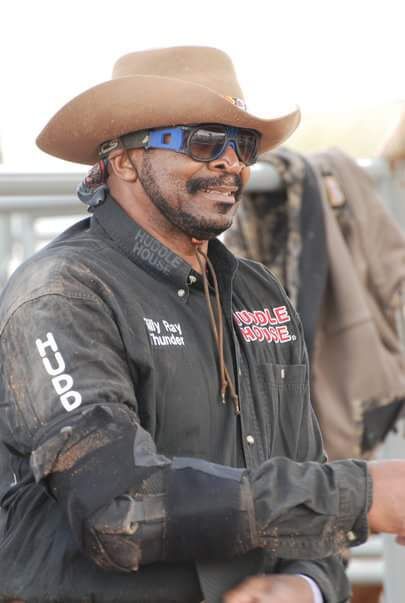
After that first experience riding bulls, what gave you the courage to try it again?
Billy Ray Thunder:
Well, it goes a little something like this. They used to have bull riding practice because you have to be good in the practice pen. There is no such thing as the electric bull. You had to make a 55 gallon drum and put a spring on it. You can practice that at home and get your balance down, but you actually get on a bull. There were degrees of bulls (for example, first timer bulls, and working your way up to rodeo bulls). If you rode them in the practice pen, you knew you would do pretty well at a rodeo. I started off natural, but there was a little kid out there in Covington, Georgia that was about 10 years old who had a broken wrist. He came up to me and said, “There are no black bull riders. You guys aren’t good at this sport. The first time you get hurt you are going to quit and that’s what makes a cowboy, to come back. That’s where the term “cowboy up” came from. Haven’t you seen the Lane Frost movie ‘9 Seconds’?” I replied, “No I haven’t. I’ve never heard of Lane Frost.” He then said, “That goes to show you that you don’t know anything about bull riding.” Would you believe that this was a kid talking to me like that? Now he is riding bulls…not first timer bulls…he’s riding regular bulls and getting thrown off 6 and 7 seconds. It somewhat bothered me there we no other black folk out there riding, so I asked, “Where are all of the black cowboys?” I’m in the city of Atlanta with a big population of blacks in it. I got out there and the first time I got hurt was with my brother, when I broke a couple of ribs. I kept riding and got injured a couple of times, but kept coming back. The one guy said, “That guy has got sand and that’s going to be a cowboy.” That’s what I wanted to hear him say to me! I got banged up really bad one time on a rodeo bull that I was riding on and I had a couple of guys come to me then and said, “You need to try bareback riding.”
When not seeing any of your peers of color riding bulls, how did that feel to you? What type of determination did that ignite in you, if any?
Billy Ray Thunder:
To me, it was like saying something that I couldn’t do and I hate to be told what I can’t do. It became personal challenge. I put all that I can in something to prove somebody wrong and prove to myself that I can do it. I wanted to be all that I could be in this rodeo circuit. At the time, I didn’t know any black cowboys except my brother. He wanted me to move to Dallas and I wasn’t moving to Dallas. After I got good in the practice pen, I started traveling with 2 young men named Guy Lyles and Lamar Casing. We started doing rodeos with the IPRA (International Professional Rodeo Association). I got pretty good at it, but got hurt a few more times. Injuries such as my eye getting knocked out and put back in, broken ribs, and broken legs, which required metal to be put in them. I guess that’s why everyone kept saying “You can’t stop this man.” God didn’t give us the spirit of fear and that’s something that we learned. God says, “We have dominion over the beasts of the field” and I was not going to let this animal outdo me. That’s just the attitude that I had.
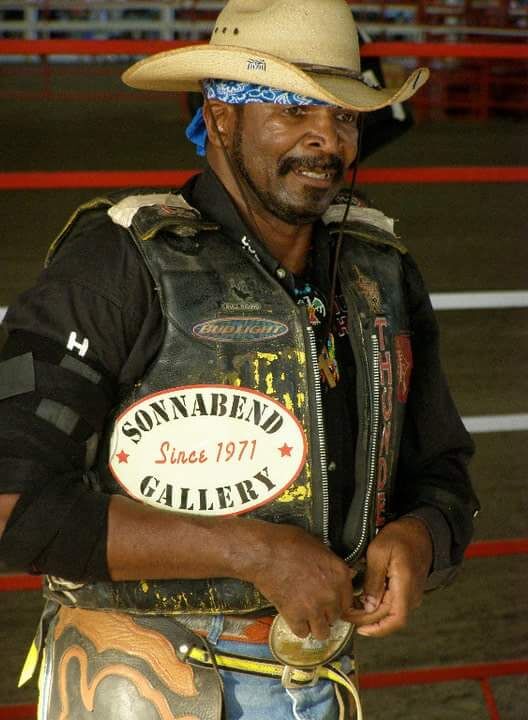
A lot of people think it’s fashionable to be a cowboy because they wear the hat, the buckle and the boots, but it takes real heart to be a real rodeo cowboy. There are serious challenges in the sport, in addition to being required to have the focus and determination to come back and do it again rodeo after rodeo. As fans, we honor that because you give us something we could never experience. A lot of people see the cowboy and think they are only in movies and especially not people of African American descent. We have a few African American westerns, but mostly, Hollywood has failed to recognize the contributions of the African American cowboy to the old west.
Billy Ray Thunder:
As far as me being a Native American Black Cowboy, I do a lot of traveling with my traveling partner, Thad Heard. It’s always good to travel in a group but you really need someone you can have in your corner that you can trust when you start participating in rodeos. You actually become a family. When you get invited to talk at these schools, they don’t even see or haven’t even heard of black cowboys. We try to teach them about being a black cowboy. They also have high school rodeos which are well known out west. High schools compete for scholarships, but a lot of black parents and kids in the east don’t know anything about it. We go and talk to the schools to let them know they can send kids to college and get paid to compete. High school rodeo finals are like any other finals in Las Vegas where you can potentially win hundreds of thousands of dollars, but a lot of black people don’t know anything about them. I adopted a 9yr old, Andrew, who, over the years went on to become number 2 in the state of Georgia. He’s the only black kid in Georgia that’s competing against all of these high school kids. Missouri State colleges are already looking at him.
There are many challenges of African American youth today. The importance of a mentor is so important for young kids to see as Andrew has in you. Share what it means to you being a role model in such a tough sport.
Billy Ray Thunder:
When it comes to kids, most places have taken away all of the basketball courts and playgrounds, which are the things kids need to get out and exercise. They replaced them with snacks and video games of violence, and kids are sitting around getting fat, not getting any regular exercise. When kids are showing the buildup in aggression, we let them know we have just the sport to take all of their aggression out on. There are plenty of male figures around the barn and plenty of work to keep them busy. Some of my male figures were Jim Brown and Fred Williams.
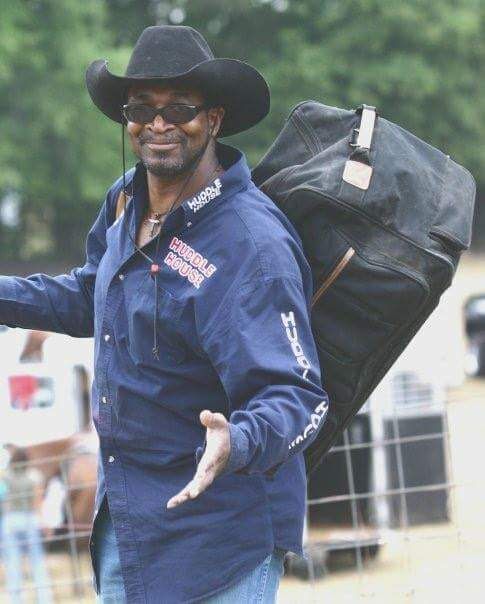
Tell us about some of your great road stories and traveling with guys such as Thad Heard.
Billy Ray Thunder:
I’ve been rodeoing and traveling with Lamar Chasing and another buddy of mine named Guy Lyles. We were on our way coming from a rodeo and stopped at a truck stop when this guy came over and said, “There are some other cowboys over there.” I said, “Well they’ve done missed the rodeo because we’re coming from it.” We went over and started talking and Lamar came back and said, “Hey, they are on their way to a rodeo and I asked, “Where?” Lamar said, “Up in Washington DC.” I kind of laughed and said, “Yeah right, a black rodeo in DC.” Lamar then said, “We can ride with them because they need more entries”, so we followed them up there and that’s when we found out about the Bill Pickett Rodeo. I didn’t know about the Bill Pickett Rodeo or the Black Rodeo Circuit. Thad and I became pretty good friends and we started riding to different rodeos together. Thad said to me, “Pretty soon you are going to have to let bull riding alone. Why don’t you try bronc riding with me?” I told him that there’s no way that I’m going to stick my hand into something that I can’t get my hand out of. That’s the way most bull riders think when it comes to bareback riding. Bareback riders are not going to get on a bull. A friend of mine named Harold Miller had a clinic that he was throwing down in South Carolina and he invited me and Thad to come down. There was this kid that would not put his hand in the rigging. Thad was trying to convince him that he had already paid his money to come down and do this, and asked him why wouldn’t he want to put his hand in and ride it out? The kid said, “Because, I’m scared.”I said, “I’m not scared” and the kid said, “Of course, you’re a bull rider and you know how to do this.” Thad turned around and said, “He will do this!” He basically volunteered me. Thad said, “I’ll go in the truck and get my bareback riding glove.” I said, “I don’t need no bareback riding glove. I’ll use my bull riding glove.” I put my hand into that rigging and the horse came out the shoot and threw me about six feet in the air. Now I’m pissed off! I went and put Harold Miller’s glove on and Thad cinched me in, but Thad didn’t tell me how to get my hand out. I rode all the way down and got ready to come back up and rolled down on the side of the horse. I didn’t know how to get my hand out while the horse was dragging me. They finally got me off and that’s how I started bareback riding.
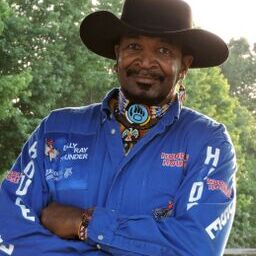
Today Billy Ray resides in Atlanta Georgia and drives trucks for a living, also teaching kids throughout the country about the sport of rodeo. When he’s not pulling loads, he’s on the road involved in rodeo, whether organizing or participating. He has become a recognized name that spans internationally. When asked how long he thinks he will continue to ride, he just smiled.
Stanford E. Moore is the CEO and Publisher of Black Reins Magazine.
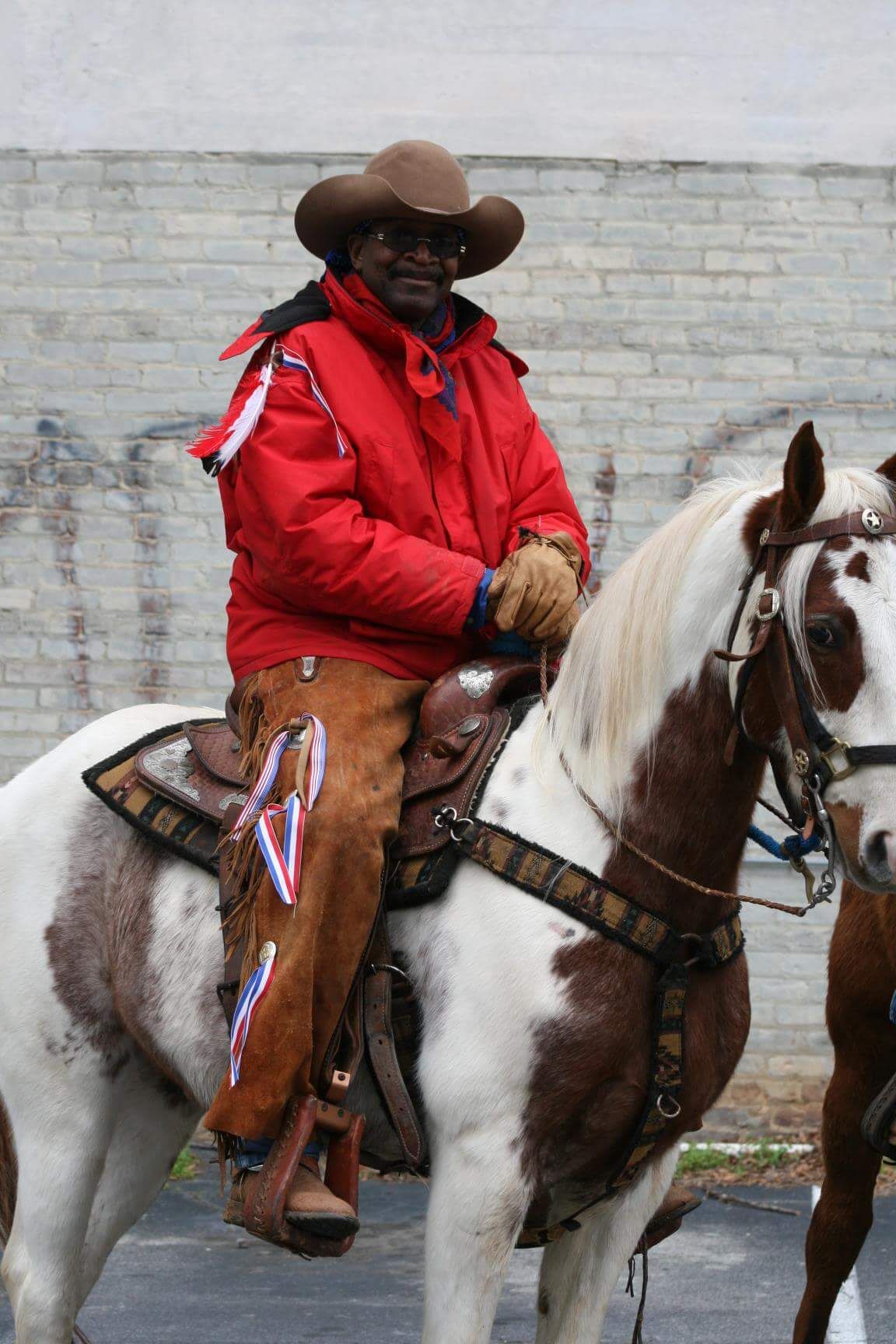
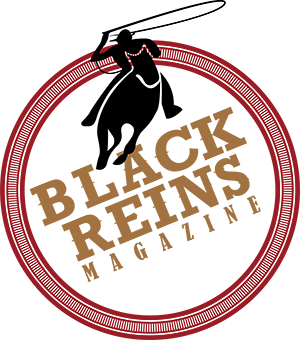

7 comments
You are the main man! You know I look up to you and always have.
Billy i’m so proud of you what more can a girl can say congratulation
A very nice article and interview with Billy Ray Thunder Mr. Moore.
Thank you Mr. Jones. It was well deserved. He’s a hard working cowboy that has paid his dues.
My all time favorite cowboy and friend. I love me some Billy Ray Thunder!!!!
Great insider article!
My 1 time at a Rodeo were I meet a real cowboy. Name Billy Ray thunder.